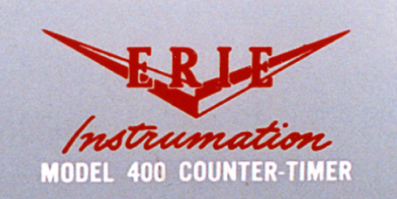

I purchased a very fine instrument in 2001
A Erie Instrumation Model 400 Counter-Timer
It has taken many years but it is finally working
This is the web page for this awesome project
Back in 1951 when this device was made Russia was still 6 years away from launching Sputnik and the Apollo missions were 13 years away yet. Nixie tubes had yet to appear. We tested the first H-Bomb and the first commercially available computer - the Univac - was announced by Rand. The first Color TV broadcast also occurred in 5 cities.
The instrument uses Dekatron counter tubes. These were not only the display but the actual counter it self. These glowing neon tubes are quite cool.

This device was quite something for its day. It was a lab quality frequency counter with a oven based crystal frequency standard. It is still stunningly accurate by today's standards and completely in calibration without any restoration or parts replacement other then 2 Dekatron tubes. This was the era of tube based computers, and this device used some of those same tubes and principals in its design.

When functioning it displays the frequency up to 100khz via the spinning Dekatron tubes. The unit can count as well and these indicators step 1 2 3 in order and it will count to 99,999. It can count to 100,000 in 1 second.
I purchased it from the worlds best electronics surplus store, Apex Electronics in Burbank California after much digging in racks of surplus.
However, it did not work completely. It did not count or display frequency while all the systems I could identify did work. It turned out a previous owner had placed the wrong tubes in the 1's and 10's sockets. I have corrected that and it now works completly except for a small and infrequent accuracy issue which I am working to resolve by replacing every tube in the unit with new-old-stock parts as of 9/17/06. I should have this done by 10/15/06.
If anyone knows of anywhere I might get a manual or schematic you must contact me.
The Dekatrons are wonderful, they spin and have almost psychedelic qualities. Below you can see one spinning very quickly showing all the digits. This is the internal one and is used in various functions and is not normally visible.
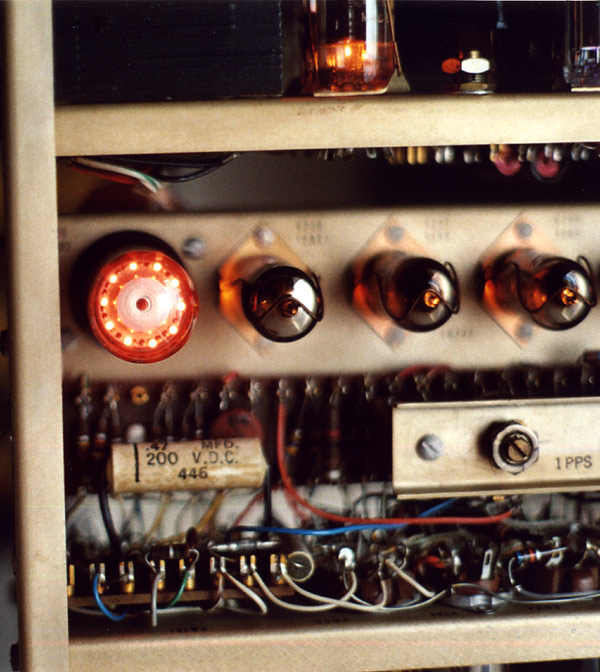
Here I am measuring a 1hz signal. It shows a variation from .9503hz to 1.0068hz
I do not have a manual / schematic and am desperately seeking them. If you know of one or know someone who does YOU MUST CONTACT ME. This IS NOT OPTIONAL.
Working on it is not easy. By any standard. It is really a analog computer that uses tubes. Its also lab grade and complex.
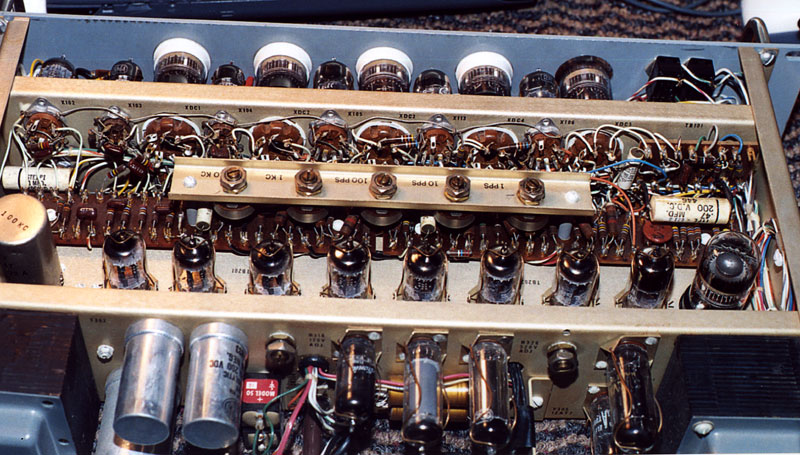
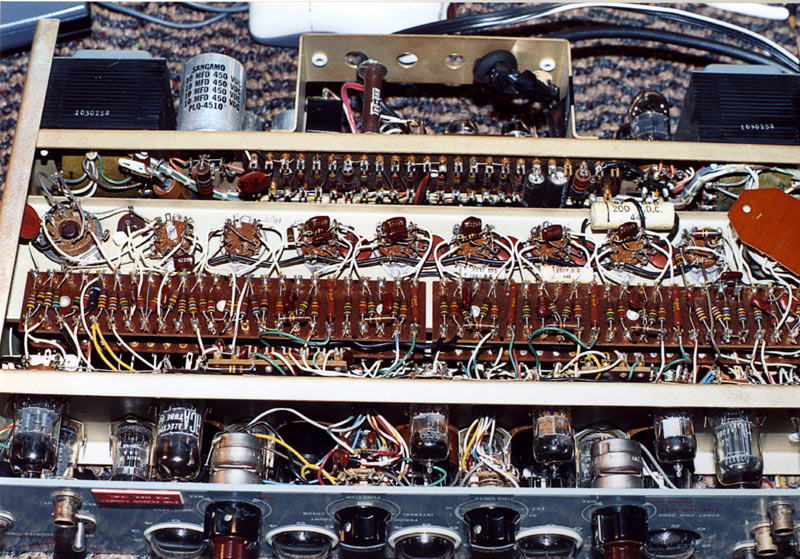
It has 35 tubes ! They glow quite nicely too. This photo was a long exposure.
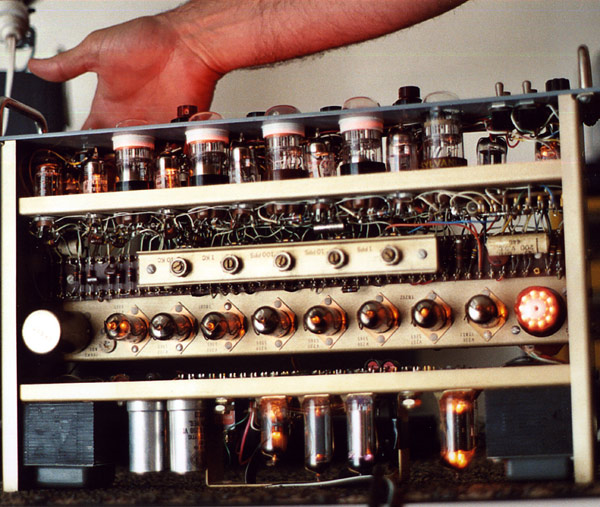
It came in a portable case. This must have been a extra option rather then rack mounted and quite handy when you needed to measure a frequency with extreme accuracy in the field in 1951. In these photos I have it removed from the case. Once im done refurbishing it I will fix up the case and reinstall it.

Strangely the actual company name is spelled differently on the case.
The front panel is Instrumation and the case is Erie Instru-mation
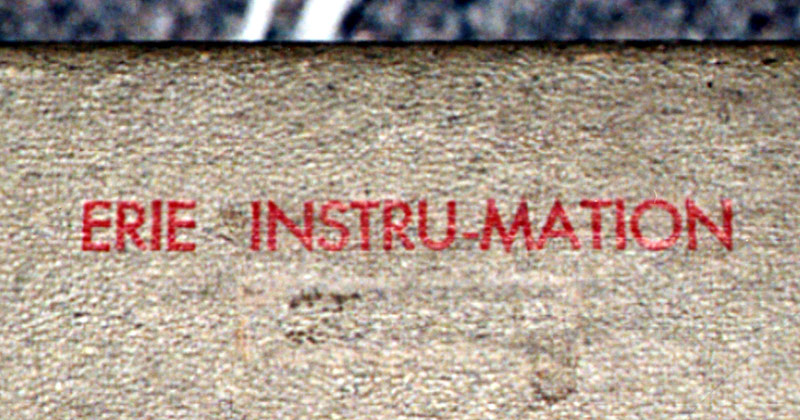
The unit has every function a modern frequency counter has. Very advanced stuff for 1951 in a portable device.
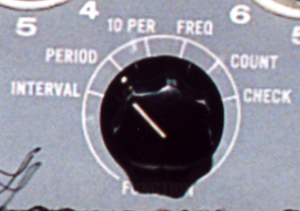
It has a very nice set of external triggering as well along with a clock output from its very accurate oven based frequency standard along with a external freq input. The clock output is selectable 1hz, 10hz, 100hz, 1khz and 10khz and is very accurate.
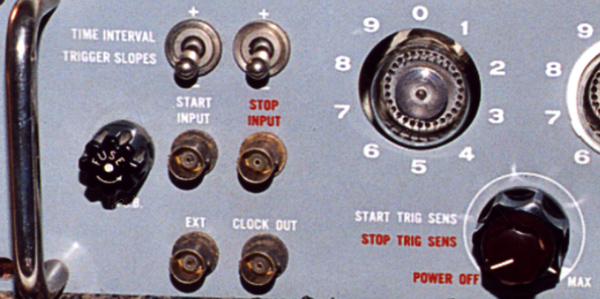
It is a handsome addition to my existing all tube workbench. I also have to use the instruments below for the repair and restoration as the voltages are higher then 300V and this exceeds many digital scopes and meters today.
My NOS Tektronics 310A scope and General Radio 728-A meter.
The meter is very useful as it goes to 3000Vdc and the scope can handle 750Vac. These are not optional as the Dekatrons use 525Vdc and high voltage signaling as well. Both of these are completely restored and in calibration.


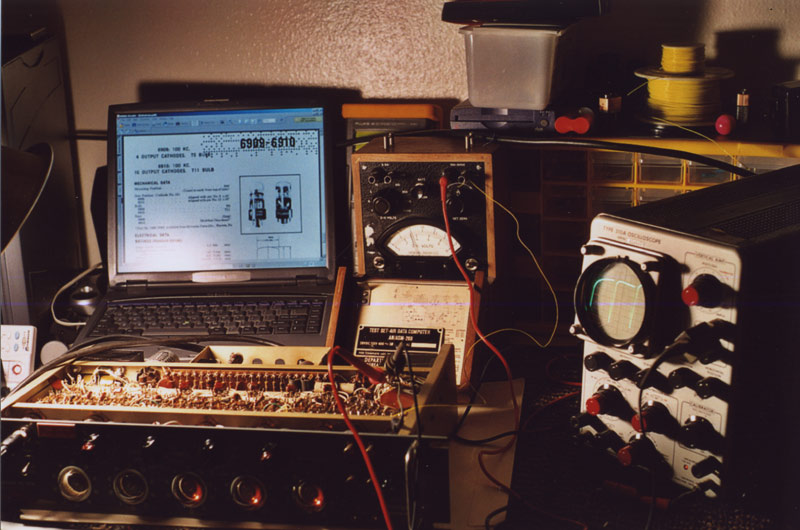
100% Tube illuminated photo. 100 Speed Kodak and a very long exposure
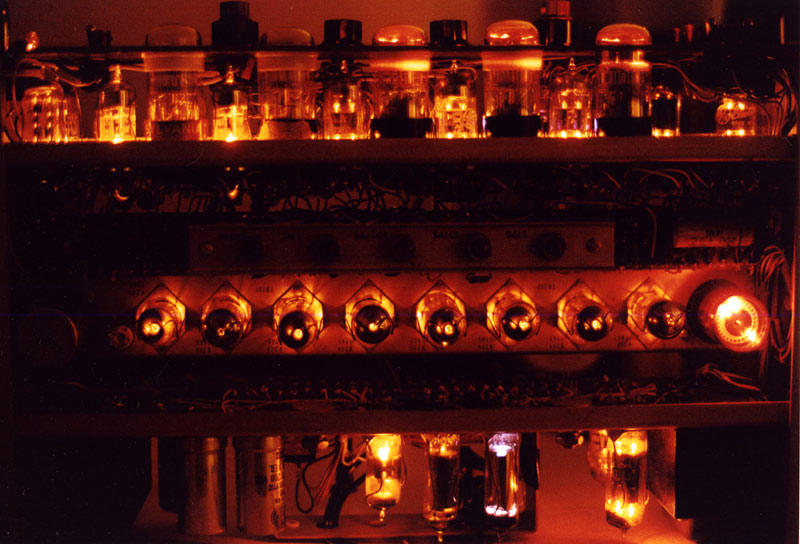
As my restoration of the wonderful Dekatron based counter continues I will update this page.
I AM SEEKING ANY INFO AT ALL ON THIS DEVICE.
Contact me immd if you know ANYTHING at all about it.
The unit uses the following tubes
6802 and 6909 Dekatrons
a LOT OF 5965'S AND A FEW 5964
Some 5696 Thyratron's
Its uses a 0B2, 6CB6 6AQ5 6BW4 in the power supply
It also uses the usual 12AX7 and 12AT7's in many places as well
The oven based crystal oscillator is a Bliley TCO-14T and operates at 75C with a huge 100khz xtal.
The shots below shows the oven based 100Khz xtal frequency source. Its a copper can with a big wrapping of wire around it and this wire is simply connected to the wall outlet and the copper gets real hot as the wire heats up. The Crystal, which is huge, plugs into the center of the copper can and a copper cap is put on which also clamps onto the crystal can. Then a overall steel can goes over the whole thing. It plugs into a standard octal tube socket. This keeps the crystal at a very constant high temp and vastly improves accuracy. This simple arrangement is more accurate then my modern test equipment with all its computer based crap. The company that made this still makes the worlds best oven controlled crystal frequency sources and in fact is powering all the current Mars mission space craft.
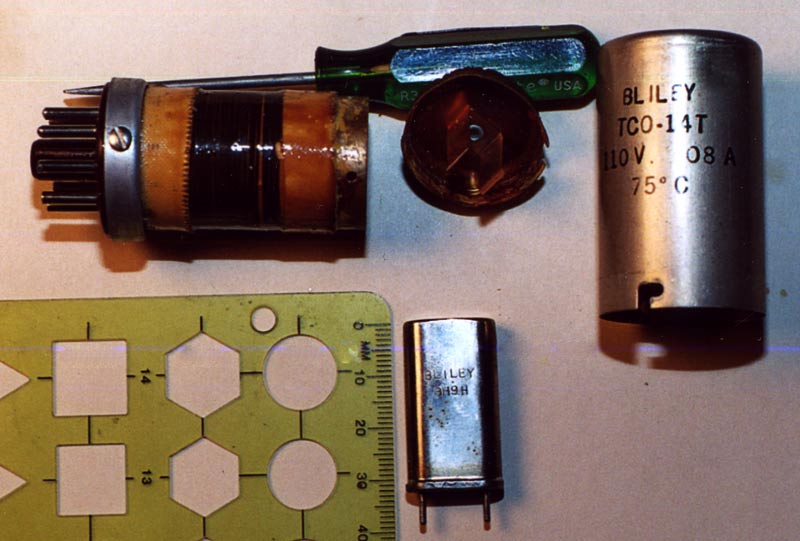
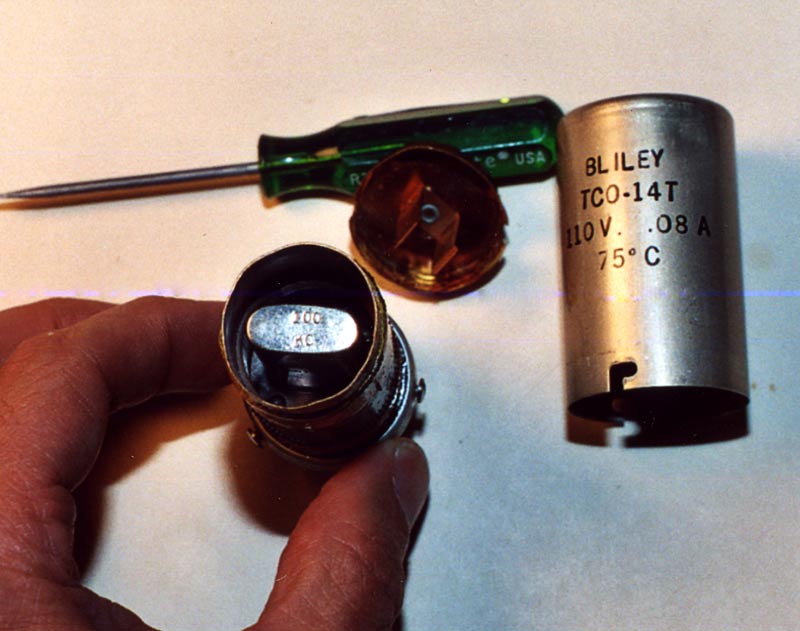
General functional and parts layout

Function operation description
Count
This mode is simple. When a signal is applied the dekatron's are advanced by one count for every cycle of the incoming signal. It can count very quickly up to 100,000 steps per second.
So for a wall power 120v 60hz signal the counter advances 60 times a second. For a 1Khz signal it advances the count 1000 times a second.
It can count to 99,999 and then rolls over to 0 and keeps counting.
Frequency
This mode is a tad more complex but easy to understand.
A incoming signal advances the count until a exact amount of time has occurred.
For example, the counter will begin counting the signal's cycles and stop counting 1 second later. How many cycles occurred during the 1 second is the frequency. So for wall power it will count 60 times during the second - IE 60hz.
You can also count for any period of time - so 100 seconds will yield a count of 6000 or 60.00Hz Or 10000 for 10.000khz for example.
The accuracy of the count is related to the Dekatrons not missing a step in the count and the accuracy of the time period used to count. The time period is a extremely accurate oven controlled crystal oscillator. The accuracy is also related to the shape of the waveform and its harmonic content - like any freq counter.
Period
This mode is simple and it works like a high accuracy - high speed stopwatch
It simply counts with a very accurate time interval. It starts timing based on when you start it and counts at 5 selectable time intervals. So you can choose and give the 5 dekatrons the following stepping intervals.
Tubes from left to right
1 ----- 2 ----- 3 ----- 4 ----- 5
10,000 sec - 1000 sec
- 100 sec - 10 sec - 1 sec
1000 sec - 100 sec - 10 sec - 1 sec - 1/10 sec
100 sec - 10 sec - 1 sec - 1/10 sec - 1/100 sec
10 sec - 1 sec - 1/10 sec - 1/100 sec - 1/1000 sec
1 sec - 1/10 sec - 1/100 sec - 1/1000 sec - 1/10,000 sec
This yields very accurate short term or long term accuracy. For example you could time a 27 hour event to a 1 second accuracy or measure 1/1000 of a second. For example, if the counter was set to the setting in yellow above and the display read 53187 it would mean 531.87 seconds.
This produces a very cool display to watch time pass just for fun
Interval - I'm not sure of this function yet as I have not had time to explore it
10 per - I'm not sure of this function yet either
All of the above functions can optionally have a number of controls.
There are trigger inputs for start and stop.
There is a variable display reset adjustment to zero the count at a regular interval if needed.
There is also a full manual mode that only resets counts on the press of a button.
It has a internal test function which allows you to test its internal frequency and see if the counter is counting correctly.
The inputs are quite sensitive and wide range adjustable from a mV to a few hundred volts for the freq/count input and the trigger inputs.
There is a external wire with 4 conductors and a special connector and I believe this is for a battery. So the unit can be made completely portable. So not only was this a amazing device in what it did - it was portable as well.